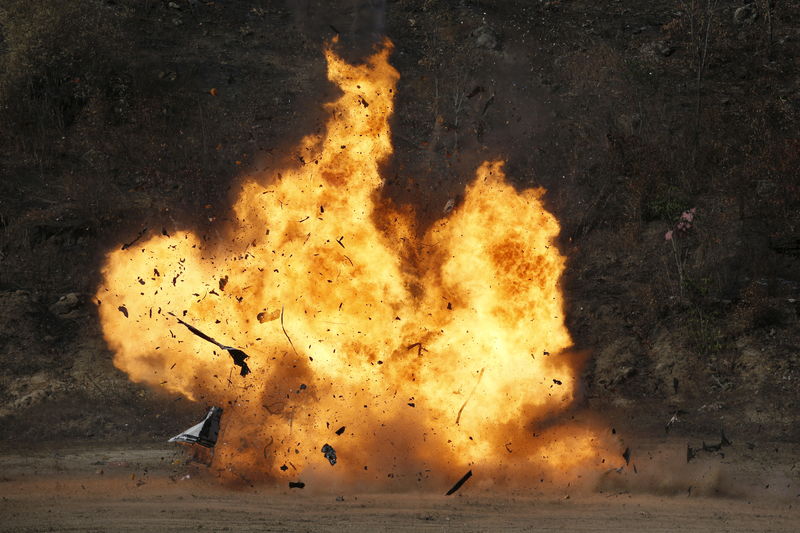By Amy Sawitta Lefevre and Andrew R.C. Marshall
CHA'AM, Thailand (Reuters) - A major Asian city is rocked by a car bomb as VIPs arrive for a summit. Nearby, a man on a motorbike detonates his suicide vest. People gather, emergency crews arrive - then a third explosion rips through the crowd.
That's the all-too-familiar scenario recently presented to a select group of Southeast Asian police officers at a U.S.-funded training course on investigating blast scenes.
The two-week course, taught by experts from the Bureau of Alcohol, Tobacco, Firearms and Explosives (ATF), is held at least once a year in Thailand. But recent events have added new urgency to an otherwise routine training.
On Jan. 14, just days after the course began, Indonesian militants launched an attack in central Jakarta with pistols and homemade bombs. Eight people died, including the four militants.
Islamic State claimed responsibility for the attack, raising fears of more violence by the group's supporters across the region.
Five months before that, another improvised explosive device (IED) tore through a popular shrine in Bangkok, killing 20 people, most of them foreign tourists.
"The whole world knows there is a bomb threat in Southeast Asia now," said Gunalan Muniandy, one of eight Malaysian police officers taking the course with counterparts from Thailand, Cambodia and Laos. "We better get prepared for the future."
BIG BANG THEORIES
Key to that preparation are four blast-shattered vehicles parked on a firing range near the Thai seaside town of Cha'am.
On Sunday, ATF personnel made three IEDs from everyday articles, including a frying pan, a toolbox, a doorbell switch and magnets from a loudspeaker.
They packed the devices with an explosive mixture called ammonium nitrate fuel oil, used in what are popularly known as "fertilizer bombs", or with military-grade C4 plastic explosive. Or both.
Two of the IEDs were attached to cars on the range. The third, a suicide vest made from an orthopedic back brace, is strapped to a mannequin on a motorbike and placed next to a third car.
The IEDs were then detonated from a safe distance. When the suicide vest exploded, the nearby car was briefly engulfed in a fireball before reappearing as a smoldering wreck.
"Everyone in that car is dead," said Michael A. Eldredge, a veteran ATF bomb technician based in Baltimore who worked the bloody aftermath of the Boston Marathon bombing in 2013.
The students arrive the next day for what Eldredge calls "scene processing": combing the debris for evidence to show what kind of bomb caused each explosion.
"CATCHING THE BAD GUY"
The design of IEDs is similar the world over, says Eldredge, with blueprints available on websites produced by al Qaeda, Islamic State and many other groups.
But the materials change depending on the country. Those used by Eldredge's team to build today's IEDs were sourced in Thai stores "to make it more realistic for the participants", he said.
An IED has five main components: switch, power source, initiator (fuse), container and the explosive itself. The first three alone can tell students whether high or low explosive was used, said Eldredge.
But first they've got to find them amid the debris of three separate bombs. The roof of one car now sits up a tree, Swiss-cheesed by shrapnel.
Eldredge gives the students a tip. With his knife, he cuts a hole in the car's tire, shoves his hand in and pulls out a ragged pellet of aluminum: part of the frying pan that formed the IED's container.
Every year, the ATF holds at least one post-blast training course in Thailand, Botswana, Hungary and El Salvador, drawing trainers from its field offices across the United States.
Evidence gathered through post-blast analysis can help prosecute a bomber or build a pattern that links a suspect to multiple devices, says Eldredge.

"If we protect the public by catching the bad guy after his first device (but) before he does his second device, we've done our job," he said.